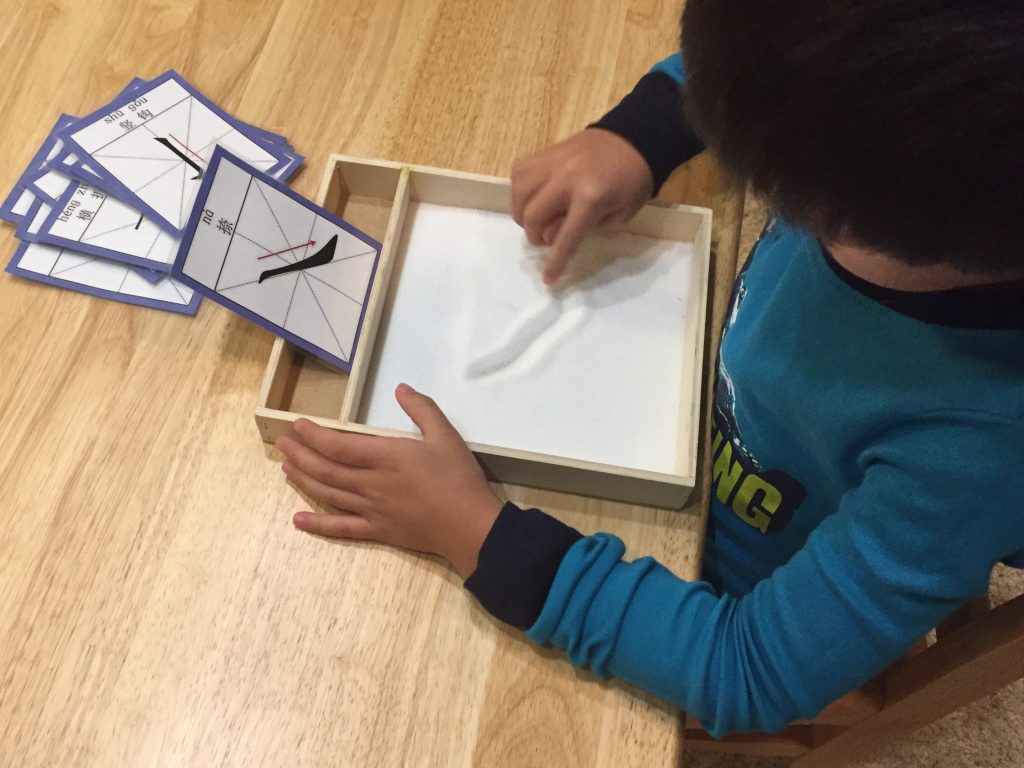13 Methods for Teaching Digraphs & Blends to ESL Learners
Mastering digraphs and blends is a crucial stepping stone for English as a Second Language (ESL) learners on their journey to achieving proficiency in reading, writing, and spoken communication.
These phonetic components, where two letters make a single sound (digraphs) or consonant sounds blend (blends), form the foundation for accurate word decoding and pronunciation.
This comprehensive guide offers ESL educators a powerful arsenal of proven methods to effectively teach digraphs and blends, empowering their students to unlock the doors to English language fluency.
This article will explore 13 engaging strategies, from interactive games and multisensory approaches to real-life connections and individualized instruction, that cater to diverse learning styles and foster a solid grasp of these essential phonetic elements.
1. Visual and Auditory Learning

Visual Aids
Visual aids such as charts, picture cards, and flashcards can effectively introduce digraphs and blends to ESL learners.
These visual cues help students associate the letter combinations with corresponding images, reinforcing the connection between the written form and the sound.
For instance, a picture card depicting a ship can illustrate the digraph ‘sh,’ while a card showing a blend of fruit can represent the blend ‘bl.’
- Picture cards and flashcards connect letter combinations to visual representations.
- Reinforces the association between written form and sound
- Examples: ‘sh’ illustrated with a picture of a ship, ‘bl’ with a blend of fruit
Auditory Exercises
Incorporating auditory exercises is equally important in teaching digraphs and blends.
This can involve listening to words containing the target sounds, identifying the digraphs or blends within those words, and repeating them aloud.
For example, the teacher can read a list of words, and students can raise their hands or use hand signals to indicate when they hear a specific digraph or blend.
This multisensory approach enhances students’ ability to recognize and reproduce sounds accurately.
- Listening exercises focusing on target sounds
- Identifying and repeating digraphs and blends aloud
- Examples: Raising hands or using hand signals to identify sounds
2. Interactive Learning Techniques

Games and Activities
Engaging ESL learners through interactive games and activities can make learning digraphs and blends more enjoyable and effective.
For example, you can create card games where students match digraphs or blends with corresponding word cards or use bingo games to reinforce sound recognition.
Additionally, you can incorporate Technology by using interactive whiteboards or educational apps that gamify the learning experience.
- Card games matching digraphs/blends with word cards
- Bingo games for sound recognition
- Interactive whiteboards and educational apps for gamification
- Partner Activities
Encouraging pair work and collaborative activities can be beneficial for ESL students.
Partners can take turns showing picture cards and identifying the digraphs or blends, or they can practice reading and spelling words containing these phonetic components together.
This approach fosters peer learning and provides opportunities for immediate feedback and correction. It also creates a supportive environment where students learn from each other’s strengths and weaknesses.
- Taking turns showing picture cards and identifying sounds
- Practicing reading and spelling words together
- Peer learning, immediate feedback, and a supportive environment
3. Phonemic Awareness

Sound Blending
Teaching students to blend individual sounds is crucial in developing their ability to read and pronounce words with digraphs and blends.
Start with simple, single-syllable words and gradually progress to more complex ones, guiding students through blending the sounds to form complete words.
For example, you can use manipulatives or a sound-blending chart to demonstrate how the individual sounds in ‘ch-a-t’ combine to form the word ‘chat.’
- Blending individual sounds to form words
- Start with simple, single-syllable words and progress to more complex ones
- Use manipulatives or sound-blending charts for demonstration (e.g., ‘ch-a-t’ to ‘chat’)
Segmentation Exercises
Segmentation exercises complement sound blending by breaking down words into their sounds.
This technique enhances students’ decoding skills and reinforces their understanding of how digraphs and blends contribute to a word’s overall sound structure. Use manipulatives or visual aids to support this process.
For instance, students can use counters or letter tiles to segment the word ‘brush’ into its sounds: ‘b-r-u-sh.’
- Breaking down words into individual sounds
- Enhances decoding skills and understanding of sound structures
- Use manipulatives or visual aids (e.g., counters or letter tiles to segment ‘brush’)
4. Use of Decodable Texts
Reading Practice

Incorporating decodable texts, carefully designed to include a high frequency of the target phonetic patterns, can effectively reinforce learning.
These texts provide controlled exposure to digraphs and blends, allowing students to practice reading words in context.
As students progress, you can gradually introduce more challenging decodable texts incorporating a wider range of digraphs and blends.
- Decodable texts with a high frequency of target phonetic patterns
- Controlled exposure to digraphs and blends in context
- Gradually increase difficulty with more challenging texts
Active Engagement
Encourage active engagement with decodable texts by having students highlight or circle the digraphs and blends they encounter.
Focusing on the target sounds reinforces their recognition and promotes reading comprehension by connecting the sounds to the words’ meanings.
Additionally, you can ask students to read the texts aloud, emphasizing the correct pronunciation of digraphs and blends.
- Highlight or circle digraphs and blends in texts
- Reinforces recognition and promotes comprehension
- Read texts aloud, emphasizing correct pronunciation
5. Multisensory Approaches

Tactile Learning
Involving the sense of touch can be a powerful way to reinforce digraph and blend learning.
Use magnetic Multisensorynd trays to allow students to manipulate and form words containing these phonetic components physically.
This hands-on approach enhances memory and understanding. For example, students can use magnetic letters to build words like ‘ship’ or ‘blend’ on a whiteboard or magnetic surface.
- Use magnetic letters or sand trays for tactile learning
- Physically manipulate and form words with digraphs and blends
- Example: Building ‘ship’ or ‘blend’ with magnetic letters
Kinesthetic Activities
Incorporate kinesthetic activities that involve physical movement and body motions.
For example, students can use their fingers to “write” digraphs or blends in the air or on their desks, or they can act out words containing these sounds through mime or role-play.
This multisensory approach caters to different learning styles and helps reinforce the concepts.
You can also use hand motions or gestures to represent multisensoryraphs or blends, such as making a ‘ch’ sound while bringing your hands together.
- “Write” digraphs or blends in the air or on desks using fingers
- Act out words through mime or role-play
- Use hand motions or gestures to represent specific sounds (e.g., ‘ch’ with hands together)
6. Real-Life Connections

Practical Application
Connecting digraphs and blends to real-life examples and everyday language can make the learning experience more meaningful and engaging for ESL students.
Incorporate these sounds into classroom labels, menus, and simple instructions, or even create scavenger hunts around the school or home environment.
For instance, you can label classroom objects with words containing digraphs or blends or create a menu for a pretend restaurant using relevant vocabulary.
- Incorporate digraphs and blends into classroom labels, menus, and instructions.
- Create scavenger hunts around the school or home environment
- Example: Label classroom objects or create a pretend restaurant menu
Contextual Learning
Encourage students to identify digraphs and blends in context, such as conversation, songs, or multimedia resources.
This approach helps reinforce the practical application of these phonetic components and fosters a deeper understanding of their usage in authentic language situations.
You can play audio clips or videos featuring the target sounds and have students identify and discuss the digraphs and blends they hear.
- Identify digraphs and blends in conversations, songs, and multimedia resources
- Reinforces practical application and understanding in authentic contexts
- Discuss and identify target sounds in audio clips or videos
7. Individualized Instruction

Adaptive Strategies
Recognizing that ESL learners may have diverse learning needs and proficiency levels is essential.
Tailor your teaching strategies and materials to accommodate different learning styles and paces. Differentiated instruction ensures that each student receives the appropriate level of support and challenge.
For example, you can provide additional scaffolding or modified activities for struggling learners while offering enrichment opportunities for those who grasp the concepts more quickly.
- Adapt strategies and materials to accommodate diverse learning needs
- Provide scaffolding or modified activities for struggling learners
- Offer enrichment opportunities for advanced learners
Focused Support
Assess students’ progress regularly and provide focused support where needed. Offer remedial activities or targeted practice for those struggling with specific digraphs or blends.
Conversely, enrichment activities or advanced challenges for those excelling should be provided to keep them engaged and motivated.
You can also consider small group instruction or one-on-one support for students who require more intensive intervention or acceleration.
- Offer remedial activities or targeted practice for struggling learners
- Provide enrichment activities or advanced challenges for excelling students
- Consider small group or one-on-one support for intensive intervention or acceleration
8. Regular Reinforcement

Continuous Practice
Consistent practice is key to solidifying ESL learners’ understanding and mastery of digraphs and blends.
Incorporate routine activities, such as word workstations, spelling practice, or fluency drills, that reinforce these phonetic components regularly.
You can also integrate digraphs and blends into other subject areas, such as science or social studies, to provide cross-curricular reinforcement.
- Incorporate routine activities like word workstations, spelling practice, or fluency drills.
- Integrate digraphs and blends into other subject areas for cross-curricular reinforcement.
- Consistent practice solidifies understanding and mastery
Feedback and Correction
Provide immediate and constructive feedback to students as they engage in practice activities.
Correct any mispronunciations or misunderstandings promptly to prevent the reinforcement of incorrect habits.
Positive reinforcement and encouragement can also boost students’ confidence and motivation.
Consider using various feedback techniques, such as peer feedback, self-assessment, or teacher conferences, to ensure students receive comprehensive support.
- Provide immediate and constructive feedback
- Correct mispronunciations or misunderstandings promptly
- Use various feedback techniques: peer feedback, self-assessment, teacher conferences
9. Assessment and Review

Regular Quizzes
Conducting regular quizzes or assessments can help gauge students’ retention and understanding of digraphs and blends.
Depending on the instructional context, these assessments can be informal, such as quick oral or written checks, or more formal.
Assessments can also be formative or summative, allowing you to monitor progress and adjust instruction accordingly.
- Regular quizzes or assessments (informal or formal)
- Formative or summative assessments
- Monitor progress and adjust instruction accordingly
Review Sessions
Organize periodic review sessions to revisit and reinforce previously taught digraphs and blends.
This spiral approach ensures that students maintain their knowledge and continue to build upon their phonetic skills over time.
Review sessions can take various forms, such as games, quizzes, or targeted practice activities, to keep the material engaging and relevant.
- Periodic review sessions to reinforce previously taught concepts
- Spiral approach to maintain knowledge and build upon phonetic skills
- Various forms: games, quizzes, targeted practice activities
10. Incorporating Technology

Educational Software
Utilize educational software, apps, or online programs that focus specifically on teaching phonetics, including digraphs and blends.
These interactive resources can provide additional practice opportunities and cater to different learning preferences.
Many educational software programs offer features like personalized learning paths, progress tracking, and gamification elements to enhance student engagement and motivation.
- Utilize educational software, apps, or online programs
- Additional practice opportunities and catering to different learning preferences
- Features like personalized learning paths, progress tracking, and gamification
Online Resources
Recommend reputable websites and online games that offer interactive exercises and activities related to digraphs and blends.
These resources can complement classroom instruction and provide students with additional opportunities for practice at home or in computer labs.
Online resources can also be valuable for distance learning or blended learning environments.
- Recommend reputable websites and online games.
- Complements classroom instruction and provides additional practice opportunities
- Valuable for distance learning or blended learning environments
11. Cultural Relevance

Inclusive Content
When selecting examples, words, or contexts to teach digraphs and blends, choose materials that reflect your ESL learners’ diverse backgrounds and experiences. This promotes cultural inclusivity and helps students better connect with the content.
For instance, you can illustrate the target sounds using words or phrases from different languages or cultural contexts.
- Choose materials that reflect diverse backgrounds and experiences
- Promotes cultural inclusivity and better connection with content
- Use words or phrases from different languages or cultural contexts
Cultural Sensitivity
Be mindful of cultural nuances in language usage and pronunciation. Some digraphs or blends may have different sounds or pronunciations in other languages or dialects.
Address these variations respectfully and guide them to ensure accurate pronunciation in the target language.
Please encourage students to share their cultural perspectives and experiences related to language and phonetics, fostering an environment of mutual understanding and appreciation.
- Be mindful of cultural nuances in language usage and pronunciation
- Address variations in sounds or pronunciations respectfully
- Encourage students to share cultural perspectives and experiences
12. Professional Development

Teacher Training
Encourage ongoing professional development for ESL educators in phonetics instruction, including teaching digraphs and blends.
Attend workshops, webinars, or conferences to stay updated on the latest research-based strategies and best practices.
Collaborative learning opportunities, such as professional learning communities or peer observations, can also enhance your pedagogical knowledge and skills.
- Attend workshops, webinars, or conferences on phonetics instruction
- Stay updated on the latest research-based strategies and best practices
- Collaborative learning opportunities like professional learning communities or peer observations
Resource Sharing
Foster a community of practice among ESL educators where they can share insights, resources, and effective teaching methods related to digraphs and blends.
Collaborative learning and resource exchange can significantly enhance the quality of instruction and provide teachers with a supportive network.
Consider creating online forums, shared repositories, or regular meetings to facilitate resource sharing and discussion.
- Create a community of practice for sharing insights and resources
- Collaborative learning and resource exchange enhance instruction quality
- Online forums, shared repositories, or regular meetings for sharing and discussion
13. Continuous Evaluation and Adjustment

Progress Monitoring
Regularly assess your student’s progress in mastering digraphs and blends through formal and informal assessments.
Conduct periodic quizzes or tests to evaluate retention and application
- Observe students’ reading, writing, and speaking activities for on-the-spot assessment
- Maintain detailed records of each student’s progress for data analysis
- Observe their reading, writing, and speaking to identify areas of strength and areas that require further reinforcement.
Data-Driven Adjustments
Analyze the assessment data to gain insights into your student’s learning patterns and areas of difficulty.
- Identify common misconceptions or areas of struggle across the class
- Pinpoint-specific digraphs or blends that require more focused instruction
- Evaluate the effectiveness of various teaching strategies and resources
Use this information to make data-driven adjustments to your instructional strategy, ensuring that your teaching remains tailored and effective.
- Modify lesson plans and incorporate additional practice activities as needed.
- Experiment with alternative teaching approaches or resources
- Provide targeted intervention or enrichment based on individual needs
- Ongoing Professional Development
Attend workshops, seminars, or online courses on teaching phonetics and ESL strategies to continuously enhance your knowledge and skills.
- Participate in local or online professional learning communities
- Collaborate with experienced ESL educators to exchange ideas and best practices
- Stay updated on the latest educational technology tools and resources
Stay updated with the latest research and best practices to refine your approach and better support your student’s needs.
- Read scholarly articles and research papers on effective phonics instruction.
- Implement evidence-based strategies and techniques in your classroom
- Reflect on your teaching practices and seek ways to improve continuously
Conclusion
Digraphs and blends are crucial milestones for ESL learners on their journey to English proficiency.
By implementing the 13 proven methods outlined in this guide, educators can equip their students with the skills to decode and pronounce words accurately, paving the way for improved reading fluency, spelling abilities, and overall language competence.
So what’s next?
Put these strategies into practice and witness your students’ confidence soar as they conquer the challenges of digraphs and blends.
Please encourage them to apply their newfound knowledge in everyday conversations, reading materials, and writing exercises, reinforcing the practical application of these phonetic components.
To further support your students’ progress, explore our comprehensive range of decodable readers and interactive online resources designed to reinforce digraph and blend mastery through engaging activities and real-world contexts.







